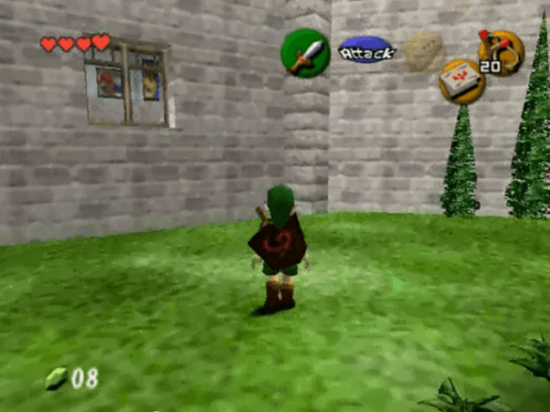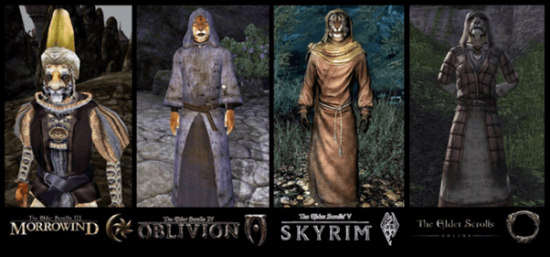Designing Perfect Easter Eggs in Video Games: Tips and Tricks
- October 4, 2024
- Piotr Klimczyk

This article is authored by guest contributor Piotr Klimczyk, who brings his expertise to the analysis for Try Evidence.
Who among us does not appreciate a pleasant surprise? However, the nature of these surprises can significantly impact how players receive them. For instance, finding a hidden feature in a game can be delightful, while receiving an unexpected bill might not be as welcome. In the realm of video games, easter eggs are among the most cherished surprises.
Unlike unwelcome surprises like intrusive microtransactions or frustrating bugs, easter eggs are designed to delight and engage players. But what exactly makes these hidden gems so appealing, and how can developers create them effectively? We’ll explore these questions, showing how these hidden surprises add depth, intrigue, and a unique connection between players and the game.
Easter Eggs in Video Games and Their Appeal
Easter eggs are hidden secrets in video games that offer playful nods from creators. They often reference other games, stories, or movies while subtly breaking the fourth wall. In literature, easter eggs feature secrecy, hidden elements, and a surprising impact on players.
Originating with W. Robinett’s hidden text in Atari’s Adventure, easter eggs have become a staple in gaming culture. Iconic examples include the secret cow level in Diablo II (Blizzard Entertainment) and Psycho Mantis reading the player’s memory card in Metal Gear Solid (Konami).

Our natural curiosity (more here) drives us to explore the unknown, especially in video games. Whether it’s uncovering what’s behind a waterfall, reaching a distant point, or discovering a hidden side quest. Easter eggs fulfill this curiosity by providing a rewarding sense of discovery.
Their appeal lies in the element of surprise, the satisfaction of discovery, and the sense of accomplishment and community they foster.
These elements cater to psychological needs for exploration, competence, and social connection. Interestingly, psychological theories provide insights into how to address these needs in game design effectively.
Fundamentals of Self-Determination Theory
Good game design should draw on well-established theories to achieve optimal results. In the context of motivation and needs, Self-Determination Theory (SDT) is a highly relevant framework.
SDT posits that people are motivated by three fundamental needs: autonomy, competence, and relatedness. When these needs are satisfied,individuals become intrinsically motivated to engage in activities, enhancing their overall well-being. In other words, people are likelier to pursue activities out of internal satisfaction rather than external rewards.
Research of Przybylski, Rigby and Ryan has shown that Self-Determination Theory (SDT) helps us understand player engagement in video games and its impact on well-being. For instance, some players seek autonomy through open-ended gameplay, while others are motivated by social interactions. Completionist players, on the other hand, feel a sense of competence by achieving all in-game milestones. You can address these needs in various ways. For example, fostering relatedness can occur through a deep connection with a game’s character, not just through multiplayer interactions.
Games like Minecraft (Mojang Studios) provide an open-ended environment that supports autonomy and competence by allowing players to explore, build, and create. MOBAs such as League of Legends (Riot Games) address all three psychological needs through competitive gameplay, skill development, and strong community involvement. The Elder Scrolls series (Bethesda Game Studios) caters to these needs by offering extensive customization options, open-world exploration, and rich storytelling.
Meeting these psychological needs is crucial for player satisfaction and overall mental health.
Games that effectively address autonomy, competence, and relatedness can significantly enhance the player’s experience.
In the following sections, we will explore how easter eggs in video games can help fulfill these psychological needs.
How Do You Design an Excellent Easter Egg in Video Games? — Our Take on Key Aspects
Designing an excellent easter egg requires creativity and a deep understanding of your audience. There isn’t a one-size-fits-all approach, but here are some flexible guidelines to help you craft memorable surprises for players.
Before diving into design, clarify the purpose of the easter egg in your game.
Are you aiming to reward exploration, add humor, reference another game, or pay tribute to fans? Understanding the goal will guide your design process. Consider the intended audience for the easter egg—whether it’s hardcore fans, casual players, or fellow developers—and tailor it to their preferences.
Different types of players are drawn to different elements of easter eggs. For example, scientists identify ‘Free Spirits’ who value autonomy and self-expression, making easter eggs that promote exploration and creativity particularly appealing. Similarly, Bartle’s classic taxonomy highlights ‘Explorers’ who enjoy discovering new features and surprises within games.
With these factors in mind, let’s focus on a few key aspects to consider when designing an effective easter egg.
Make an Easter Egg Challenging but Not Impossible to Find
Players understand that, by design, easter eggs are meant to be challenging to find. They’re designed to be a rewarding challenge for players. According to the Self-Determination Theory, discovering an easter egg fulfills the need for competence, particularly for players who enjoy exploration or adopt a completionist approach to games.
The key is to strike a balance between making an easter egg too easy—thus rendering it trivial and failing to test the player’s skills—and making it too difficult—potentially making it seem impossible and discouraging players, especially those who may not have the patience or time to invest in exhaustive searches (eg. older players).
Achieving this balance can be a nuanced task and could be an excellent topic for UX research. However, it’s generally better to avoid making easter eggs too easy to find rather than making them overly challenging. This ensures that they remain a satisfying achievement without becoming a frustrating barrier.
Subtle with an Impact
Many games feature subtle yet impactful easter eggs in their dialogue, with the Monkey Island series (Lucasfilm Games) providing exemplary examples. These moments demonstrate how a well-placed reference can add depth and humor, enriching the gaming experience.
In Curse of Monkey Island, Guybrush Threepwood uses a Jedi mind trick to bypass a cabana boy, echoing Obi-Wan Kenobi’s famous line from Star Wars: “You don’t need to see my identification.” This subtle reference not only delights franchise fans but also fits seamlessly into the game’s narrative tone.

Another standout moment occurs in Return to Monkey Island, where there is a dialogue option: “If you strike me down, I shall become more powerful than you can imagine.” Here, Guybrush’s attempt at a grandiose line ends humorously with him suffering broken bones, adding a comedic twist to the reference.
The essence of effective easter eggs lies in their subtlety.
A line or two of dialogue that mirrors a well-known scene—such as a memorable Star Wars quote—can prompt players to think, “Hey, this is just like that scene with Obi-Wan!” The subtlety of these easter eggs enhances their impact, allowing them to blend seamlessly with the game’s narrative while eliciting smiles of recognition from players.
Mind the Level of Obscurity
Balancing Obscurity
When designing easter eggs in video games, the level of obscurity should be carefully aligned with the type of players you are targeting. The human brain tends to favor information that aligns with existing knowledge, where familiarity offers a sense of security while novelty provides an exciting dopamine response.
Understanding your players is crucial in this regard. For a general audience, referencing a well-known pop culture phenomenon can hit the familiar spot, offering a delightful surprise without being overly obscure. For instance, a subtle nod to a popular film or TV show can provide players with a sense of recognition and enjoyment, as these references are unexpected yet easily grasped.
On the other hand, if you aim to appeal to a more sophisticated or niche audience, consider incorporating references to literary works or less mainstream cultural artifacts. For example, in The Witcher 3 (CD Project Red), there’s a nod to Tolstoy’s Anna Karenina with the line: “Happy families are all alike; every unhappy family is unhappy in its own way.” Such references can engage players who appreciate literary allusions, adding a layer of depth and sophistication to the game.

Balancing the level of obscurity involves understanding your audience’s traits and preferences. Striking the right balance ensures that easter eggs are both rewarding and meaningful, enhancing the overall gaming experience.

Satisfy Psychological Needs through Easter Eggs
The level of obscurity in easter eggs relates directly to Self-Determination Theory (SDT). It particularly addresses the psychological needs for competence and relatedness.
Easter eggs that strike a balance between familiarity and obscurity offer players a sense of competence.
When an easter egg is challenging yet recognizable, it creates a rewarding sense of achievement, especially when linked to an in-game accomplishment. Successfully uncovering a well-hidden reference gives players a sense of accomplishment, making them feel smart and knowledgeable. This achievement often stems from connecting dots between pop culture and literary works. This aligns with SDT’s focus on competence, as players derive satisfaction from mastering challenges and recognizing subtle cues.
Obscure references also cater to the need for relatedness. When players recognize and appreciate a reference to a specific literary work or pop culture phenomenon, it fosters a sense of connection with the game’s designers. For instance, recognizing a literary allusion, such as the reference to Tolstoy’s Anna Karenina in The Witcher 3, suggests that the designer shares a similar appreciation for literature. This shared knowledge creates a bond between the player and the designer. Ultimately, it fulfills the need for relatedness by establishing a deeper, more meaningful connection.
In summary, well-crafted easter eggs that strike a balance between obscurity and familiarity enhance players’ sense of competence while fostering relatedness. This approach aligns with the core principles of Self-Determination Theory.
Case: Super Legend of Zelda Bros
Cross-Franchise References and Fan Engagement
For studios with multiple franchises, easter eggs referencing other games can be a clever way to acknowledge their broader portfolio and strengthen fan engagement. These hidden gems remind players of the studio’s other creations. They also foster a sense of community among fans. Nintendo, in particular, excels at this practice.

For instance, in The Legend of Zelda: Ocarina of Time, players can find paintings of Mario and other Nintendo characters in Hyrule Castle. This subtle reference is a nod to Nintendo’s other popular franchises and might be missed by some players. Similarly, in Super Mario RPG, Mario sleeps next to Link from the Legend of Zelda series. Such cross-references are common in both Mario and Zelda games. They serve as a fun way for fans to connect the dots between different titles.

Recurring Easter Eggs in Video Games and Brand Loyalty
Brand loyalty in gaming often mirrors platform loyalty, akin to the long-standing rivalry between PlayStation and Xbox. This loyalty can be a powerful asset when designing easter eggs in video games. It reinforces a deeper connection between the game and its audience.
A similar strategy appears in series where recurring easter eggs become a staple over time. For example, M’aiq the Liar in The Elder Scrolls series is a character that players now expect to see in every new installment. This recurring presence creates a sense of continuity and anticipation among fans.

Another notable example is Rockstar Games’ Grand Theft Auto series. In GTA: San Andreas, the infamous train mission features the gold medal objective “Better than CJ,” which references the popular line, “All you had to do was follow the damn train, CJ.” This reference has become a meme within the gaming community, further solidifying fan engagement.

What do Nintendo, Rockstar Games, and Bethesda Game Studios have in common? They all have dedicated fanbases with extensive knowledge of their franchises. By incorporating easter eggs that connect to various elements within their games, these studios enhance the sense of relatedness among players. This makes the gaming experience more immersive and rewarding.
Sometimes, the Most Obvious Ideas Can Be the Most Novel
Designing an easter egg as a literal egg may seem straightforward, but it can be surprisingly effective and humorous. This approach serves as a playful nod from designers. It breaks the fourth wall and signals to players that their efforts are recognized. It can add a light-hearted touch to the game, making the experience even more enjoyable.
A notable example of this is in the GTA: Vice City. In this game, the developers included a hidden room with an easter egg, literally an egg.

The sequel, GTA: Vice City Stories, set two years before Vice City, includes a reference to the construction of this egg. This clever design choice enriches the game world’s coherence and invites players to engage in a meta-narrative. It further encourages exploration and discovery within the game.

Summary
As illustrated, easter eggs in video games can significantly enhance player experience by fostering a sense of accomplishment, autonomy, and community among players. While they are not essential for every title, they can add depth and enjoyment to the gaming experience.
We hope this article has provided you with valuable insights into implementing effective easter eggs and has inspired you to view them as powerful design tools.
However, this is just the beginning. We have touched on the basics of creating excellent easter eggs, but there are also potential pitfalls to avoid. Stay tuned for our next discussion, where we will dive into common challenges and how to navigate them.
For more insights on player psychology, check out our other articles. You can learn about the concepts of identification and wishful identification in video games by visiting the links here and here.



 (4.00)
(4.00)

